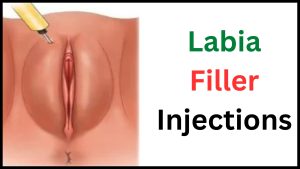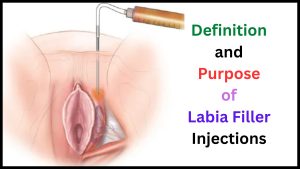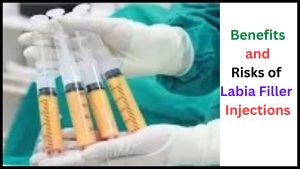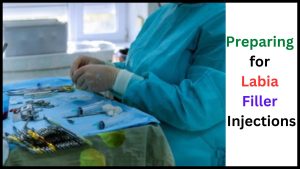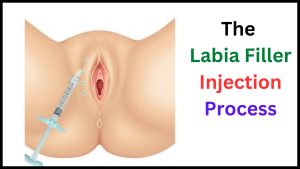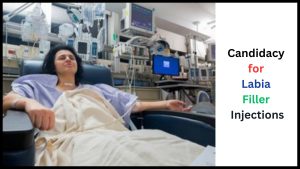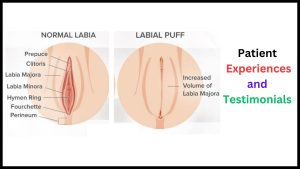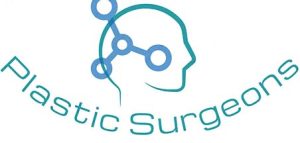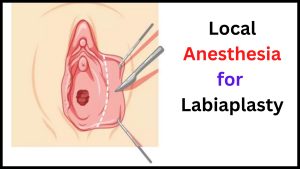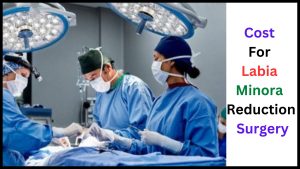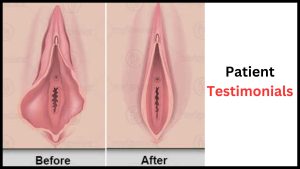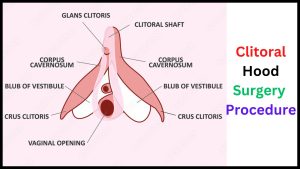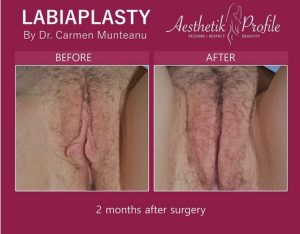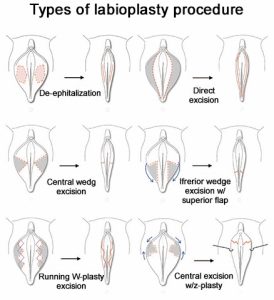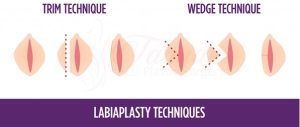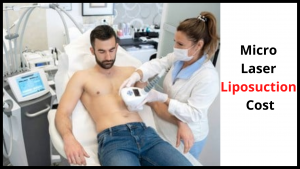
Micro-laser liposuction is a procedure in which fat cells are sucked out using a narrow tube.
The treatment takes about 10 minutes and is usually covered by most insurance plans.
A small amount of pain is associated with this procedure and is temporary.
The treatment costs around $2500 to $4500, though some patients can see results after just a few sessions.
It is important to note, however, that this process is minimally invasive.
The cost for a single treatment can range from $2500 to $4500.
The cost of multiple treatments can be quite expensive.
Micro Laser Liposuction Cost – And other things you need to KNOW!
A good idea is to consult with an aesthetician before making a final decision.
If you decide to get the procedure, you should be prepared to pay a higher amount.
However, many people find the procedure to be safe and effective.
The cost of micro-laser liposuction depends on the area of the body to be treated.
The surgeon may recommend a maintenance course for maximum results.
A typical patient should avoid strenuous physical activity for at least three weeks before undergoing the procedure.
This procedure is considered safe for most people and can return to normal activities soon after the procedure.
The downtime after this treatment is about 2 weeks.
The recovery time is a week or two, so it can be costly.
If you are unsure, consider consulting your physician first.
And if you think this procedure is right for you, don’t wait too long to make a final decision.
The procedure is expensive, but you can use it to treat the problem.
Your doctor will recommend that lasers use.
If you are concerned about the cost, you can use SmartLipo, a treatment option that allows you to have a smaller recovery time.
And if you have been considering the procedure, you may want to find out how much it costs.
If you have a large area, you can have several treatments.
You’ll need to have a clean tummy and stomach to ensure the best results.
In general, there are several different kinds of liposuction, but they all require local anesthesia.
The procedure is less painful, and you will recover quickly, but it will cause some pain afterward.
While the process isn’t as expensive as the procedure of traditional laser liposuction, the recovery time is longer.
If you have a large amount of stubborn fat, you can use a microcannula.
In addition to its ability to remove fat cells, micro-laser liposuction can also help you get a tighter, firmer face.
The procedure is less expensive than traditional laser liposuction and requires little downtime.
During the procedure, your skin is stretched out.
As a result, you will have less downtime and a more even skin tone.
In fact, it is an excellent choice if you have a small area of excess fat.
If you are wondering how much micro-laser liposuction costs, you’ll be amazed by the results.
The procedure is painless, but you’ll be able to return to work in about a week.
And the procedure is less painful, so you’ll be able to exercise the next day.

How Much Fat Can Be Removed With Laser Lipo? -(Exact and What to Consider and Guage)
About 5ltrs of fat can be removed depending on the area it was removed and the patient as well.
The target is to give the patient an optimum look.
It will require the same amount of time as traditional lipo.
This process does not leave any scars, but the fat removed will be visible for a few weeks.
The downtime is approximately one week, and there is no need to return for a month or more.
The recovery from laser lipo is relatively quick.
This will only take about 45 minutes to an hour for the procedure.
The patient should be able to resume light activities two to three days after the procedure.
While some patients experience some swelling and bruising, it is rarely painful and does not require an overnight recovery.
Usually, it does not cause any side effects.
Although the procedure is minimally-invasive, some side effects may occur depending on the patient and body system.
While the procedure is minimally invasive, the recovery is may still belong, depending on the location of the procedure.
Some clients may require a few sessions to see results.
Depending on the area that needs to be treated, patients may need as many as six to eight treatments to achieve optimal results.
While the recovery period may belong, the downtime is minimal and most clinicians recommend three to eight weeks of downtime before returning to strenuous activity.
While the procedure does not permanently remove the fat cells, the improvement will be permanent.
During the recovery period, patients should stay away from sugar, processed foods, and alcohol.
Because the fat cells are left behind, they can fill back up with new fat and cause additional damage to the surrounding tissues.
As with any surgery, weight fluctuation may also negatively affect the results.
That is why it is essential to maintain a healthy diet and exercise program after the procedure.
Most people can lose about five to ten inches with laser lipo.
The laser will liquefy the fat cells and remove them from the body.
Some patients may lose five to ten inches of fat, and others may only lose a few inches.
The treatment will reduce the waist by about one to two inches.
A few people will have minimal or no bruising, so it is important to choose the right area for the procedure.
The procedure can be done in both areas.
For instance, laser lipo will be most effective for areas that are stubborn or hard to treat, like the abdomen.
With CoolSculpting, the procedure will not only reduce the fat in the targeted areas but will also reduce it in other parts of the body.
For those patients who are overweight, the surgery will not remove a large portion of the fat, but the area should be as healthy as possible.
Because the procedure involves the release of fat cells from the body, patients will experience a number of side effects.
In some cases, they may feel fatigued and dizzy.
However, in other cases, the treatment may reduce the amount of fat in the target area.
Moreover, Laser Lipo will not leave the patient prone to infections or skin rashes.
In fact, it can provide a cosmetic tune-up for any patient.
If you’re a person with a blood thinner, you should consult your physician to find out whether you need to stop taking it for two weeks before the laser lipo.
You should also refrain from taking vitamin E supplements and tanning for seven days before the procedure.
If you’re on blood thinners, then you should also consult with your doctor before your laser lipo treatment.
In addition, you should avoid sun exposure and St. John’s Wort, if you have an existing medical condition.
If you want to reduce the amount of fat on your abdomen, the most popular areas for this procedure are the thighs and the abdomen.
The treatment is performed under local anesthesia, so patients do not experience any significant side effects after the surgery.
In addition to the obvious benefits of the procedure, it can be combined with noninvasive treatments to further enhance the results.
When you combine the two, you’ll be amazed by the results.

How Many Sessions Does Laser Lipo Take? (Reasons and How)
When you decide to undergo laser lipo treatment, it’s a good idea to know how long the recovery will take.
This treatment is non-invasive and takes between two and three sessions per week and up to about 4-6weeks to complete.
Most people are able to resume their regular activities within 10 days, depending on the area being treated.
After the procedure, you can return to work and other activities, including light physical activity.
The number of sessions required depends on the size of the treated area and the patient’s medical condition.
The process itself takes between 40 and 50 minutes.
The doctor uses a series of small laser paddles on the targeted area.
Depending on your body type, you may need several sessions to achieve the desired results.
Although the results are apparent after each treatment, you may need more than one to achieve the most satisfying result.
For optimal results, you should have between six to eight treatments.
You can also schedule periodic maintenance treatments at intervals, depending on your goals and your lifestyle.
The procedure is non-invasive, and patients do experience slight pain, bruising, or swelling.
After your session, you should drink plenty of water and avoid strenuous physical activity for a week.
You’ll also need to rest for a few days after your treatment.
After laser lipo, your skin will be firmer and more elastic.
A few weeks after your treatment, you can resume normal activities.
The treatment involves a local anesthetic.
Because the procedure uses a local anesthetic, the patient is awake during the procedure.
The laser can cause slight heat and pressure on the skin.
This is normal and will eventually disappear naturally.
The patient will likely notice the effects of the treatment after two to four sessions.
And the healing time can be longer for some patients.
The procedure requires little to no downtime.
Most patients don’t experience long-term side effects.
However, some people may experience soreness.
If you’re planning to have the procedure done in a large area, you may have a need for several sessions.
This is because the laser may cause discomfort.
If you have sensitive skin, you can get a lower risk of this side effect if you have more than one treatment.
After two or three sessions, the results of laser lipo should appear within two to six months.
The best results will be visible after four to six months.
Also, the body may continue processing dead fat cells for another three to four months, but this is not common.
Most patients will need just one session.
After a few sessions, laser lipo will produce gradual improvements.
Most people only require one session to see noticeable results.
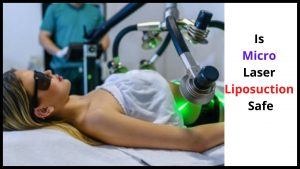
Is Micro Laser Liposuction Safe? (What to Consider)
If you’re considering a liposuction procedure, you may be wondering: “Is it safe?”
It’s important for you to know some things.
Although lasers are considered safe, you should avoid certain medications and activities following a micro-laser procedure.
Aside from that, the procedure is a less painful process, and downtime is required for a few days.
Nonetheless, the recovery period is usually short – about a week to a month.
Is micro-laser liposuction dangerous? Is it painful?
Yes! However, many patients report minimal pain and discomfort.
Besides, the procedure may result in bruising, bleeding, and swelling.
But in the long run, the results are worth it.
For example, most people report fewer complications after undergoing micro-laser liposuction.
In addition, many patients report less bruising.
Is micro-laser liposuction dangerous?
The procedure can be risky.
The patient should be properly assessed by a professional before undergoing the treatment.
Most patients have good outcomes, but if he or she has any concerns about the procedure, he or she should seek medical advice before going ahead with the procedure.
When it comes to the risks, it is important to consider the benefits and risks.
Is micro-laser liposuction a safe procedure?
In fact, it is perfectly safe.
While this procedure requires minimal downtime, it’s not considered a surgery.
The results are immediate and permanent.
If you’re worried about side effects, consider using a different method.
This can help you get the results you’re looking for.
And if you’re considering having a mini-liposuction, it may be worth it for you.
What are the risks of micro-laser liposuction? Is it safe?
You should consult a doctor before undergoing this procedure. Understanding the risks and benefits is vital.
There are several risks associated with laser treatments.
If you’re planning on laser procedures, it’s essential that you consult with a professional.
This procedure can be costly and can leave you with scars.
It’s possible to experience a burn after undergoing treatment.
If you’re unsure, talk to your doctor and get a consultation.
Is micro-laser liposuction really safe?
There are a few risks involved in this procedure, but the recovery period can be long.
If you’re looking to have liposuction, you should consider a doctor’s opinion on the procedure.
Most surgeons will perform laser lipo.
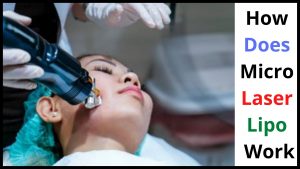
How Does Micro Laser Lipo Work? (How it works)
The process of laser lipolysis is a simple procedure, but it is not suitable for everyone.
It is not a substitute for a healthy diet and exercise, and it does not remove a large volume of fat.
And it can cause bruising, but most patients can resume light activities within two weeks.
The recovery time varies according to the size of the treated area.
Also, the most common results are seen within three to four months, depending on the patient’s health and the area of treatment.
This method requires you to lie flat on a table.
The process is not a long one, lasting approximately forty-five minutes.
It targets the fat cells. This process does not involve any downtime.
The process is safe for everyone, and it does not cause discomfort or pain.
Furthermore, it does not require downtime.
The results of the procedure are instant.
You will be able to see the desired results in as little as two sessions.
How does micro-laser lipo work?
If you have a large area that you would like to target, you should start by liquefying the fat cells in your skin.
Then, you can move the pads to another part of your body.
If you have a small area, you can perform the procedure twice.
And if you want to achieve fast results, it is recommended that you undergo at least six sessions.
The procedure is simple.
The micro-laser liquefies the fat cells, which causes them to lose their round shape.
And the fat cells will die as a result of the release of the fatty material.
The process is also painless.
If you are not sure about the method, you can seek help from a doctor.
Also, if you choose the micro-laser lipo treatment, you should consult with a physician before undergoing the procedure.
The process of micro-laser lipo can be painless.
Despite the fact that the procedure is minimally invasive, it is not painful and can be done on all parts of the body.
Afterward, the fat cells will be destroyed.
The body will have a slimmer, firmer appearance.
This is the most popular method for laser-lipo.
It works well on all parts of the body.
This treatment is a very effective way to reduce fat.
Micro-laser lipo is a safe procedure that is effective for people with stubborn fat deposits.
It is a procedure that uses a small micro-laser, which is a high-powered pulse of light that is aimed at the body’s fat cells.
It has been used for several decades and has helped thousands of people lose weight and improve their health.
There are numerous benefits of this type of surgery, and it is worth trying.
The micro-laser process is safe and effective.
In addition, it can be used to target problematic areas of the body.
The procedure is safe for many people.
Aside from its minimally invasive nature, it doesn’t require much recovery time.
This technique can reduce love handles, saddlebags, and tummy bulges.
And this is the best method to reduce unwanted fat without surgery.
It is an effective procedure that is effective for reducing fat in other parts of the body.
How does micro-laser lipo work?
Unlike traditional methods, micro-laser lipo is a quick and painless procedure, which is safe and effective.
It is a relatively new technology, which has become the most widely accepted in the world.
And its effectiveness is not yet determined, however, and many questions remain.
The procedure does not have a long-term effect.
It does not take a long time.
Also, the best results are achieved when the results are permanent.
The procedure may not be suitable for all patients, though, because it can have adverse effects.
It is expensive, so it is not recommended for everyone.
A micro-laser lipo treatment can help reduce the amount of body fat by as much as 25%.
If you are considering the procedure, it is important to consult a qualified medical professional before proceeding.
A specialist can recommend the procedure to you.
It is a safe procedure.

Is Laser Lipo Worth The Money? – Here are the Facts that you may not KNOW!
The cost of laser lipo is high, but it is well worth it if you want smoother skin.
The process increases the temperature of the skin and stimulates the body to produce collagen, which can help improve the appearance of the skin.
Likewise, fat is reduced, and skin is tightened.
The risks and benefits of laser lipo are comparable to those of other non-invasive body contouring procedures.
However, you should discuss the pros and cons with your doctor before undergoing this procedure.
The recovery time depends on the amount of fat that is removed.
After the procedure, patients are usually able to return to light activities within two to three days.
They may require several sessions to see the full results.
In addition, clients should avoid vigorous activities for four to six weeks after the procedure.
Afterward, patients should rest for one week.
They should continue to exercise for a few weeks, depending on the size of the area treated.
Some common side effects of laser lipo include pain and discomfort in the treatment area, loose skin, and discoloration of the skin.
Some people may experience burning under their skin immediately after the session, which is caused by fluid buildup.
If this happens, you should visit a doctor for medical advice.
You may also experience temporary dimpled skin.
Though this is rare, it could happen to some people.
After the treatment, patients may experience soreness and discomfort, but it will subside within a few days.
A compression garment will be used to speed up the healing process and decrease the risk of infection and other complications.
Ideally, you should exercise regularly after laser lipo.
A healthy lifestyle will help you achieve the desired results.
It’s important to keep your skin in good shape to ensure a long-lasting result.
Although laser lipo is expensive, the results are visible after just one treatment.
Some patients can see significant improvements after only one session.
Others may need more than one.
They can expect to see dramatic results after six to eight sessions.
It is a minimally invasive procedure and the downtime it requires is little.
The procedure will cost you about $2,500 to $4,500.
If you are a candidate, you should talk to your insurance provider about the potential risks and benefits of this procedure.
After laser lipo, you should expect several days of downtime.
You will experience significant bruising and swelling.
And you might need to wear a body garment for a few days.
You should avoid strenuous activity for at least a few weeks after your procedure.
Nevertheless, laser lipo is a safe and effective procedure.
It will leave you looking slimmer and more fit.
You can expect to see noticeable results within a few days of the treatment.
Laser lipo can be performed on all parts of the body.
It is a non-invasive procedure that removes fat from all parts of the body and is safe and effective.
Its biggest drawback is that it is not a safe procedure.
Some people may experience severe side effects or complications.
It can also be dangerous.
Many patients who undergo this procedure may experience a severe allergic reaction to the laser.
But it is safe and effective.
Fortunately, laser lipo has become a popular cosmetic surgery.
The procedure is minimally invasive, so there are no serious side effects.
You may experience mild pain, and swelling, but this will quickly subside.
Afterward, you can return to your normal daily activities, but you will still have to recover from the procedure.
Aside from the risks, laser lipo is also an expensive surgery, so it should be done only by an experienced surgeon.
After the procedure, the laser lipo is a minimally invasive procedure that does not require any downtime.
The procedure requires only a few days of downtime.
After the treatment, you can go back to work and do normal activities.
The procedure is very effective and does not require any side effects.
If you choose to have laser lipo, the procedure is an excellent choice.
While you should be aware of the risks and benefits before having it performed.
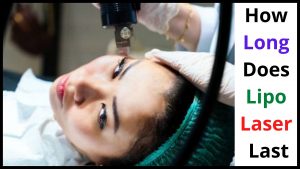
How Long Does Lipo Laser Last? – What you need to know!
Generally, the lipo laser usually takes about 1hr per area.
The duration of the lipo laser treatment depends on the location of the treatment.
Also, the back and front are treated separately.
After the first session, the patient must undress or change into swimming gear.
And the applicator will be placed on the skin and set in specific positions.
The arm will target fat in the thighs, arms, and bra areas.
Some people experience swelling or burning under the skin, which can be treated by a doctor.
However, this side effect is very rare and can be avoided with a healthy lifestyle.
Depending on the procedure, patients may experience some pain and downtime.
The procedure typically requires one to two sessions to achieve desired results.
And the downtime for these procedures varies from one to three weeks.
The amount of time a patient will need to recover will depend on the areas treated and their overall health.
Some people report feeling firmer skin after the procedure.
A small amount of swelling is normal.
Some people report an increased level of collagen production.
After the procedure, patients may feel some discomfort.
The laser treatment lasts between twenty and forty minutes.
After the treatment, the patient will need to wear a compression garment.
Afterward, the skin may look firmer, but there are no pain and no downtime.
Generally, the patient can return to work and engage in regular activities the next day.
The procedure can also promote the production of collagen.
So, you can expect a reduced amount of swelling and bruising after the laser treatment.
Laser lipo has very little downtime.
Most patients only need to take time off work for a few days.
After a laser session, your skin may look firmer and you can resume normal activities.
The downtime for the treatment will vary depending on where you have the procedure done.
Your first session can take up to three months.
Once your skin has healed, it will be firm.
There may also be some redness, and bruising after the procedure, but these side effects are minor.
The procedure is safe for the majority of people and effective.
Also, the procedure only requires a few treatments.
Although it does take some time, the effects are very noticeable and long-lasting.
As a result, the laser lipo can improve your appearance.
While it can be used to treat both men and women, it is not a good option for the obese.
If you have a low metabolism, this surgery is not a good option for you.
Laser treatment can be performed on your face and midsection.
The laser procedure will last around a month.
A small incision in your skin will be made.
The laser will be inserted through the incision and the heat will be released.
After the treatment, you will need to rest for a few days.
Then, you will have to take time off from work and undergo any necessary physical therapy.
You may have to take a few days off work to recuperate.

Is 3d Lipo Permanent? – Why and If!
YES! is an answer to this question.
It is permanent if you follow a healthy diet and exercise routine.
The process does not cause downtime, which means you can immediately return to your regular activities.
The results of 3D Lipo are instant and permanent as long as you maintain a normal weight.
If you are interested in getting the procedure done, you must be sure that your consultant is a trained aesthetician.
Also, If you are not certain, a consultation is necessary first.
Most people describe the procedure as relaxing.
The only downside is that it is cold.
However, it only takes about five minutes to get used to.
Some clients have reported feeling numbness and pinching in certain areas.
The head is comfortable and you should avoid caffeine and alcohol for a week or two.
The results vary from person to person, and three to four sessions are generally recommended.
Unlike more invasive fat removal treatments, the recovery time is shorter.
The results of 3D Lipo treatment are permanent if you follow the recommended treatment schedule.
The results can change with time, due to hormonal changes and weight gain.
It is important to follow a healthy diet and exercise regime to maintain your new look.
You will not need to adhere to a rigorous exercise routine after the procedure.
Although you may need to have a top-up treatment every year, the recovery time of this treatment is less than that of other procedures.
The recovery time for 3D Lipo treatments is a short one, lasting about half an hour.
It may take a few months for fat freezing to fully take effect, but you can usually expect to see noticeable results in as little as a week.
Some patients report noticing results after the first treatment.
The recovery period is significantly less than the time required for more invasive fat removal methods, and you can resume your normal routine after your treatment.
The results of 3D Lipo are permanent, but it is important to follow the recommended treatment plan.
For the best results, you must avoid eating high-calorie foods and excessive alcohol.
Also, your body can retain fat and make it harder for your treatment to last.
But the procedure will not remove the entire layer of fat.
You will need to drink a lot of water after your procedure to ensure your results are maintained for a long time.
The results will depend on the patient’s lifestyle.
Some treatments are temporary, while others require a course of treatment to achieve the desired results.
But if you follow the recommended treatment, your results are permanent.
You will not have to exercise or undergo a diet after your treatments.
The recovery time will be shorter than for other fat-removal methods.
Afterward, your skin will be smoother and firmer.

How Many Inches Will I Lose With Laser Lipo? – And WHY!
Generally, you will lose about one to two inches in the first few sessions.
You should expect to go to multiple sessions over the course of several weeks.
The total number of sessions will depend on the area you are trying to address.
However, your doctor will provide you with a realistic estimate of how much fat you can expect to lose.
If you have specific concerns or a specific goal, you can discuss the procedure with your doctor to ensure you’re satisfied with the results.
The number of inches you can expect to lose depends on the area you’re having treated.
If you have a small area, you’ll probably lose half an inch.
Large areas may lose as much as two inches.
The number of inches you’ll lose depends on the size of the area.
If your body is not resistant to losing fat, it may be an excellent choice.
You can also opt to lose stubborn areas and avoid surgery altogether.
The number of inches you’ll lose will depend on the size of the area you’re having treated.
You’ll see results right away, but it may take up to six months before you see the full benefits of the laser lipo.
If you’re serious about your appearance, laser lipo can be the right option.
It will help you look good, feel better, and feel better.
You’ll look more fit and appealing.
The procedure is very effective for fat reduction and will leave you with slimmer legs.
Laser lipo uses light and LED light targets stubborn fat deposits to liquefy them.
The released fat passes out of the body through a temporary pore.
It will have 48 hours to burn and then be absorbed by the lymphatic system.
Most people will feel no discomfort during the procedure and can go back to normal activities within a week or two.
Once the fat cells have been removed, the remaining cells will respond to exercise and diet.
If you continue with a healthy diet, you won’t gain any more weight.
On the other hand, if you don’t exercise, you will gain some.
This is where the laser lipo comes in handy.
The most common areas treated are the stomach and thighs.
These areas tend to be resistant to losing fat.
The process of laser lipo will remove fat cells in the body.
This can be a big advantage for those who have stubborn fat.
The surgery will also leave skin smooth, but it will not specifically address cellulite.
And the procedure will only improve your overall silhouette, though.
You won’t have to worry about losing weight after the procedure, and you’ll be able to get in better shape and feel better.
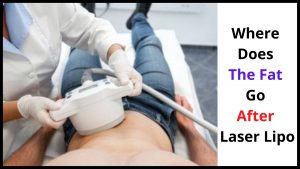
Where Does The Fat Go After Laser Lipo? – And HOW!
During the procedure, the laser light targets the fat cells and confuses them into thinking they need the energy to survive.
A temporary pore is made in the fat cell membrane and the contents will be released for 48 to 72 hours.
The lymphatic system will pick up these drained fat cells, which will be excreted through the urine and sweat.
The results will be permanent, but you will still be left with lumpy skin.
You should also stick to a healthy diet and exercise plan to maintain the results.
Once the procedure is complete, you can expect to experience some soreness after the procedure.
The pain should subside within a few days, but you may need to limit certain activities.
Your doctor will also recommend wearing a compression garment to encourage the healing process.
To make sure that you’re recovering quickly and safely, it’s important to maintain a healthy lifestyle following the procedure.
You’ll have a healthier body in the long run.
As with any surgical procedure, the results will last for years.
If you lose weight, you will retain the results.
The process can also make the fat cells return to areas where the laser did not reach.
It is essential to remember that your body will continue to gain weight after laser lipo.
To maintain the results, you’ll need to stay slim.
You should eat a balanced diet for the rest of your life.
Laser lipo has been a popular way to reduce unwanted fat.
However, there are several risks associated with the procedure.
While low-level lasers are considered safe, they have not been thoroughly studied.
Because of this, many are skeptical about the procedure.
In addition, the recovery time may vary, depending on the size of the treatment area.
Most people can return to work or normal activities within a few days.
Patients should be aware that the procedure has a high recovery time.
Although the procedure is non-invasive and painless, patients should still stick to a healthy diet and exercise plan.
It’s important to avoid carbohydrate-heavy and high-fat diets, which help release fat into the bloodstream.
The procedure will also require a few days of downtime before patients return to work.
It will take about three weeks before a patient is able to resume strenuous activities.
After the procedure, patients can expect to see improved skin texture.
Furthermore, laser treatments can promote the production of collagen, which helps the skin look younger and firmer.
The procedure itself is extremely safe.
It uses a laser to freeze the fat cells on the body.
The laser light then confuses the fat cells to think that they need energy, which results in them draining their contents.
The contents of the fat cells are then filtered through the lymphatic system and eliminated through the urine and sweat.
As soon as they are removed, you’ll see them no longer as fat.
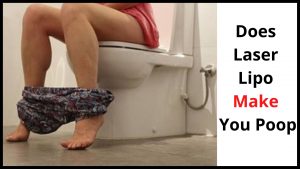
Does Laser Lipo Make You Poop? (When, How, and Why Color Change)
Laser lipo treatments are extremely safe, although some patients do experience a change in stool color or texture.
This is because the liquefied fat is disposed of by the body as waste.
Typically, laser lipo does not cause side effects.
However, you should follow the instructions of your therapist.
Before undergoing the procedure, you should consult a doctor about any medical conditions you have, and you should have a health questionnaire filled out before your procedure.
Cold laser fat removal does not have any significant side effects, but some patients do experience a change in stool color or texture following the procedure.
This is a normal reaction, and the body’s elimination of fat will occur.
While the procedure is non-invasive, it is essential to incorporate healthy foods into your diet to reduce the risk of bowel movement after the procedure.
While the treatment does require a few weeks of recovery, you can expect to have a 1-2-hour period between sessions.
It is a recommended schedule for four to six treatments.
Every session will require about one to two hours long.
The laser used in liposuction can be performed on patients of all ages and all body types.
The drained fat is sent to the liver where it is broken down into fatty acids and triglycerides.
And the body eliminates the drained fat by sending it to the liver for gluconeogenesis, or the making of sugar.
The treatment is completely non-invasive and there is no downtime.
While you should exercise to burn off the drained fat, it is unlikely to cause bowel movements.
During laser lipo, the fat cells are taken to the liver for digestion.
They are then broken down into fatty acids and triglycerides.
And the triglycerides are eliminated in the body by white blood cells.
This is an important part of the treatment since the body eliminates the fat via fecal matter.
The only thing you will notice during the procedure is a slight color change in your stool.
After laser lipo, the fat cells are destroyed.
The white blood cells then process them and turn them into triglycerides.
This fat is then metabolized by the liver.
During the recovery period, you can expect a change in stool color and texture.
As a result, your body is getting rid of the liquefied fat in your intestines and eliminating the waste from your body.
Laser lipo treatments are noninvasive and have no side effects.
Some patients experience a slight color change in their stool after the treatment.
After each treatment, the fat is liquefied and sent to the liver to be processed.
The fat in your intestine is then eliminated from your body and the procedure is complete.
The fat is no longer a problem! It will be gone forever.
You just need to make a few changes in your diet.

Is Micro Laser Liposuction Permanent? – And WHY?
Micro-laser liposuction treatment is permanent.
The procedure targets the fat cells deep inside the body.
Patients are stripped of all clothing and lie on a table.
The procedure takes anywhere from 20 to 40 minutes and causes minimal discomfort.
There is also no downtime after the procedure.
Afterward, patients can resume normal activities.
Most people can return to normal life within a couple of days.
After micro-laser liposuction, fat cells will not regenerate.
During the process, fat cells become smaller as the lipid fatty acids are reduced.
Although the procedure can remove fat cells, the remaining cells may produce higher levels of lipid fatty acids than before.
This can give the impression that the fat has returned.
However, it will take some time before the area of liposuction will start to show signs of regrowth.
After laser lipo, the remaining fat cells will remain, but the size of those cells will not change.
Rather, the fat cells will be empty of lipid fatty acids and will never regrow.
As long as the patient maintains a healthy lifestyle and diet after the procedure, the results will be permanent.
If the patient continues to eat poorly after the procedure, he or she may experience an increase in weight.
While these complications are rare, the risks associated with micro-laser liposuction are low enough to warrant a consultation with a doctor.
The procedure is permanent.
Once the fat cells have been removed, they can never regenerate.
The remaining fat cells are discharged from the body in six to 12 weeks.
And the body then flushes the dead cells out through its natural elimination process.
Once they are removed, the body can no longer produce new fat cells, so the procedure is permanent.
But unlike the other methods of surgery, it does not involve any side effects.
Aside from the benefits of micro-laser liposuction, the results are permanent.
The laser contours will remain regardless of weight loss or weight gain.
In addition, the fat cells will never regenerate, so the results of the procedure are permanent.
Aside from that, the procedure is not as painful as you might think.
The results will last for several years.
This means that the results are permanent.
Micro-laser liposuction works on all areas of the body.
It is a permanent procedure.
The fat cells are not replaced, but they aren’t permanently gone either.
Also, the laser energy from the procedure does not regenerate new fat cells, so the results are permanent, as well.
The results are not limited to the treated areas.
After a microlaser lipo, most patients report being happy with their new shapes and are encouraged to adopt healthier lifestyles.

Which Is Better Lipo Laser or Ultrasonic Cavitation?
Both procedures are effective in removing fat deposits.
Liposuction is a common goal of the procedures, but there are also differences between the two.
Laser Lipolysis punctures the fat cells, releasing the contents.
Ultrasonic cavitation melts the fat cell.
Both procedures require a series of treatments, typically eight, to achieve the best results.
Also, both procedures can produce immediate results, although Laser Lipo is more permanent.
Both methods involve dissolving fat cells, making them easier to remove.
The laser lipo is typically less painful than ultrasonic cavitation, and ultrasonic cavitation uses a handheld ultrasound device to target the body area.
However, cavitation does not have the same cosmetic benefits as laser lipo.
Because the treatment is non-invasive, it’s ideal for patients with fatty deposits.
It can also be more effective in treating stubborn areas and improving the overall look of your skin.
With laser lipo, you can experience immediate results.
If you wish to see faster results, you’ll need multiple sessions, so you might want to get a package that includes multiple treatments.
Both procedures can be effective in reducing fat in a variety of body parts, including the waistline, thighs, arms, and under the chin.
While both methods reduce fat, some people may be more sensitive to the side effects of either procedure than others.
With ultrasonic cavitation, you’ll notice a difference immediately after the procedure.
This technique is more effective in areas where fat is harder to remove.
It will produce instant results, but a series of sessions will produce the best results.
You’ll need to take care of your body after laser lipo to avoid a painful recovery period.
And you can use this procedure for many different areas, including your abs, thighs, arms, and even the under-chin area.
Both treatments are safe and effective.
Ultra-Cavitation is a non-surgical procedure.
It requires no anesthesia or scarring.
The two procedures differ slightly in the amount of time they take to complete.
Also, the sculpture is more popular than ultrasonic cavitation, but both have some disadvantages.
It’s best to consult a professional in your area to find out which is best for you.
Both procedures are safe and effective.
Ultra-Cavitation is a more effective procedure because it does not require anesthesia or scarring.
CoolSculpting is FDA-approved and is recommended by dermatologists and surgeons.
It has been shown to reduce body fat by 20% or more.
Most people aren’t aware of these risks, but it is best to talk to your doctor and discuss your options.

Does CoolSculpting Work On Belly Fat? – And Why?
The technology behind CoolSculpting works by chilling the affected areas to the point that fat cells begin to break down and crystallize.
The frozen cells are then eliminated from the body through the lymphatic system.
This helps the areas treated shrink.
The cold used to perform CoolSculpting treatments can cause the affected areas to expand and contract.
However, the treatment does not affect the surrounding tissue.
The process is safe and effective.
While it is considered an aesthetic procedure, it is not covered by most insurance plans.
To make your CoolSculpting treatment affordable, you can ask your provider about payment plans and discounts.
While these methods are not ideal, you can always work with them to get lower prices.
Some offices also offer promotional discounts for new patients.
While this method is not guaranteed to eliminate belly fat, it can help you achieve a flat tummy in as little as one session.
While CoolSculpting is a non-surgical cosmetic procedure, it does come with its drawbacks.
It can cause the growth of new fat cells in the treated areas.
This effect is called paradoxical adipose hyperplasia.
Moreover, it is not intended for obese individuals.
It is recommended for individuals with only small amounts of excess fat that are resistant to exercise and diet.
If you are considering this procedure for yourself, it is worth the price.
The FDA has approved CoolSculpting for many body areas.
The technique has also undergone extensive testing, which shows that the procedure can work for most people.
Most of the procedures used by the clinic are safe, painless, and have a high success rate.
Most patients lose fat in all body parts, including the thighs and stomach.
And, it works wonders for stubborn fat and thigh pockets.
While the treatment is safe and effective, it does cost.
The procedure requires several sessions to see the results.
As a result, it does not require any surgical intervention.
The procedure removes fat cells in the abdomen and back and is permanent.
Although the method is not covered by insurance, it is not uncommon for people to have multiple sessions for the stomach.
A single treatment can reduce up to 40 percent of body fat.
The results are permanent.
You may need more than one CoolSculpting session for your stomach area, but they will be permanent.
The results will last for two to three months.
The procedure is not a cure-all for obesity.
As a nonsurgical solution, CoolSculpting can help you get rid of stubborn fat.
But you must still follow a healthy diet and exercise regimen.
If you have a bad diet, you should avoid this treatment.
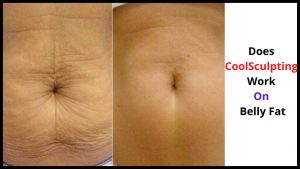
Does Cavitation Tighten Skin? – What to KNOW!
The answer depends on what you’re looking for.
There are many procedures available, but not all of them are as effective as lipo cavitation or RF lipolysis.
These treatments are more expensive than other procedures, but they are very effective for reducing cellulite and contouring the body.
They may be painful or involve a downtime period, but they’re worth the results in the long run.
Ultrasonic cavitation and Radio Frequency Skin Tightening are two popular procedures that target fat cells and improve skin texture.
Both procedures work to reduce fatty deposits in problem areas by targeting fat cells with low-frequency sound waves.
While the latter does tighten the appearance of the skin, it can harm other tissues and organs.
Those who are allergic to animal-based products may not be a good candidate for this procedure.
The procedure is performed by using a specialized machine that uses ultrasound technology.
Also, the device is placed on the skin and makes circular movements on the area.
Then, a Radio Frequency handpiece is placed over the area.
The heat from the radio waves is powerful enough to cause collagen fibers to tighten.
And the skin-tightening results are visible in a short period of time.
The treatment requires consultation and is usually covered by insurance.
The process is also often used to treat the facial area.
The ultrasonic wave energy penetrates the skin, triggering the production of fresh collagen fibers, making the skin look firmer and younger.
This procedure can cause swelling and redness, but these will disappear within a day or two.
Some clinics perform this treatment as part of a fat cavitation session.
You can check out the board-certified surgeon here for more information.
In addition to reducing cellulite, cavitation is an alternative for treating sagging skin.
The procedure is also useful for removing excess fat from the body.
It helps reduce fat from “fibrotic” areas.
Also, it is most effective in tightening the skin in the back and chest area.
When used in combination with a radiofrequency, cavitation causes collagen to produce new cells.
It is safe and effective, so it is a great option for sagging skin.
Ultrasonic cavitation is a technique that targets the fat in the skin.
It also improves the skin’s texture.
And it’s often used for stretch marks, acne scars, and pigmentation.
Some clinics even use this method to treat wrinkles.
But the question is: Does cavitation tighten skin? And what are the benefits and risks?
There are several types of treatments for sagging, including Ultherapy, and radiofrequency.

Does Laser Lipo Tighten Skin? – How and Why?
Yes, this procedure has been known to achieve results in reducing fat and resulting in a more toned appearance.
The goal of plastic surgery is to improve a patient’s aesthetic appearance by safely and effectively eliminate unwanted fat and skin.
While many other methods exist, none have achieved the same level of success.
In addition to laser liposuction, ultrasonic technology is used to disrupt fat cells.
Thermage uses electrical current to cause injury to the tissues.
The skin-tightening effect is perhaps the most significant benefit of laser lipolysis.
Though early reports have suggested lackluster results, this may be a result of the steep learning curve.
It may also be due to improper energy application or accumulating heat.
In most cases, treatment will require several treatments, with optimal results occurring after two to four months.
Regardless of the technique, however, it’s important to note that laser lipo has some risks and is not recommended for people who are at their ideal weight.
The laser used in laser liposuction will destroy fat cells and stimulate collagen production.
The results of this procedure will be notified within one week of the procedure, but it can take up to six months for the full benefits to become apparent.
This procedure requires a small incision.
A cannula containing the laser fiber will be placed beneath the skin.
The depth of the incision will be determined by the surgeon.
While conventional liposuction is largely reserved for those with firm skin and fat pockets, it may be an option for people with stubborn pockets of fat.
With preliminary research, it seems the laser may spur the production of collagen in the treated areas, making the procedure more attractive for people with loose skin.
It’s also better than traditional liposuction, which can cause scarring and is often more painful.
During the procedure, patients are typically given a compression garment to minimize swelling and promote tightening of the skin.
This garment will also be worn for several days after the procedure to ensure that the skin has a chance to heal properly.
A lymphatic massage can also improve circulation and result in a more radiant complexion.
Tylenol, Bromelain, and Arnica Montana can also be prescribed to alleviate pain.
Laser liposuction is a form of lipolysis.
The laser is used to melt the fat, causing it to be released from the body.
And the process results in tighter skin by destroying fat cells.
This treatment has numerous benefits, including a smoother and healthier appearance.
If the laser is used to treat your stomach and chin, it will also improve the health of your skin and reduce the risk of scarring.
While some patients report a visible improvement in their skin after laser liposuction, there is no scientific evidence to support the claims.
Although some lasers can cause a slight discomfort after the procedure, some people have noticed a noticeable improvement in their skin after laser liposuction.
As a result, patients will have a much slimmer, firmer, and more appealing appearance.
And the procedure will leave the area of treatment looking much more sculpted.
While it is good to say that laser lipo does tighten skin, some patients report a noticeable improvement.
During the procedure, the skin shrinks significantly, resulting in a tighter chin and lower belly.
Some of the results of this procedure may include a firmer face.
It can even reduce the appearance of a sagging face.
The same procedure can be used for the chin.
The procedure is more effective than traditional liposuction.
It can also reduce sagging skin and improve contours.
The laser is very precise.
During the procedure, the fat cells in the treated areas are eliminated, leaving the skin tight and firmer.
The patient will also have a reduced risk of complications, which can include infections.
Aside from the laser, Smart Lipo has a smaller risk of side effects.

Can Laser Lipo Cause Weight Gain? – Here’s what to KNOW!
Laser lipo can be performed on various parts of the body, but some patients do worry that the treatment will cause weight gain.
The surgery actually removes fat cells, but they are not destroyed.
They are just empty.
That means that they will be able to store fat again.
As a result, the only way to keep the results is to follow a healthy diet and exercise regimen.
To avoid this, make sure you have plenty of lean protein and stay away from sugar and alcoholic drinks.
In addition, be sure to follow your doctor’s instructions for a well-balanced diet.
The procedure doesn’t hurt, and most patients report having no downtime or discomfort.
And the procedure itself is completely painless.
The fat is stimulated to melt through the pores in the skin.
This causes the melted fat to be transported through the lymphatic system and then expelled from the body.
The laser lipo is appropriate for people who have bulges or excess skin.
There is no downtime or discomfort after this procedure.
Once your body has healed, it is important to continue your exercise routine.
Light aerobic exercises should start within two days after your procedure.
After two weeks, you can move on to more intense exercise.
Also, after two weeks, you can start resistance exercises, such as lifting weights or working with resistance bands.
This will help your body maintain its new shape.
If you are already gaining weight, laser lipo is not for you.
The laser lipo is an excellent option for people with stubborn bulges and excess skin.
It is safe and effective.
While the process is painful, it does not hurt your body.
The laser melts the fat cells within your skin.
And the melted fat is then moved through your lymphatic system, which eliminates them from your body.
You can also do little exercises with a few resistance bands.
This will help you maintain your new body shape.
While laser lipo does not involve surgical procedures, it can still cause some side effects.
Some people may experience swelling and pain after the procedure, but there is no need to worry.
Afterward, laser lipo is not likely to cause serious side effects.
The risk is minimal and temporary.
Some patients experience a burning sensation under their skin after the procedure, which can be treated with medication.
Others may experience a dimpled appearance.
However, it is important to keep in mind that a permanent result is rare.
A regular exercise routine is essential for long-term results.
Many people who don’t work out before the procedure will need to resume their exercise routines.
This will reduce the risk of weight gain.
After the first week of recovery, weight training can be resumed.
Moreover, resistance exercises can tighten the skin and help you feel more energetic.
These exercises can also help prevent the re-growth of fat.
It is vital to maintain your new body contours in the long run.

Does Laser Lipo Cause Weight Loss? – What to do for prevention!
Several factors may play a role in whether laser lipo causes weight loss.
The treatment itself is non-invasive, and recovery time is minimal.
In most cases, patients are encouraged to exercise after the procedure.
A healthy diet and regular exercise will help the body process the melted fat.
Regardless of whether you are obese or overweight, you can reduce the amount of fat that you have by laser lipo.
In addition to reducing the size of unwanted fat, laser lipo will promote collagen production.
As long as you exercise regularly and maintain a healthy BMI, laser lipo will remove stubborn fat and eliminate stubborn areas.
Although results may be immediate, the full benefits will not be visible until six months.
The results will continue to appear for several months after your treatment.
If you are able to lose fat through this treatment, it will not cause weight loss.
It is recommended for those with a healthy BMI and who have some stubborn areas.
While the procedure isn’t considered to be a weight-loss treatment, it is still an effective way to remove fat in stubborn areas.
It will also improve your body’s appearance.
Most people get Laser Lipo in the thighs and stomach areas, but it may not be effective in all areas.
In the meantime, patients should focus on exercise and a healthy diet to ensure lasting results.
This procedure is a great way to reduce unsightly fat in your body.
There are no proven side effects to laser lipo, but it is important to understand the risks and benefits.
The procedure is designed to contour your body using laser energy to reduce fat pockets.
Some patients may experience temporary swelling and bruising, but they will eventually recover, and they will lose weight.
They must also stick to a healthy diet and exercise regime to maintain their results.
You should not expect to lose weight overnight.

Does Skin Sag After Laser Lipo? – What to KNOW!
Although laser lipo is a popular procedure for body contouring, there is a risk that loose skin will remain after the procedure.
The skin may be saggy after liposuction, but a laser-assisted liposuction procedure can tighten it if it’s mild to moderate.
However, it will not tighten the skin of a person with severe sagging.
While the laser-assisted liposuction procedure is effective for mild to moderate sagging skin, it is not effective for removing excessively saggy skin.
Patients who have loose skin are often not ideal candidates for the procedure.
Many plastic surgeons prefer to combine the two procedures, allowing patients to enjoy a well-sculpted body and tight, youthful-looking-looking limbs.
The laser used during laser liposuction can also result in loose skin after the procedure, but this is very rare.
This is because the treatment removes fat from a particular area but does not destroy the surrounding tissue.
It does, however, add collagen to the surrounding tissue, which prevents the skin from sagging.
The skin sags after liposuction is an effect of the fat removal, not the treatment itself.
It’s also important to understand that this surgery is not performed on every patient and that some patients may not experience any complications.
In addition to the risks associated with traditional liposuction, laser lipo has some advantages.
It reduces the risk of sagging because the tube is smaller and more precise.
Furthermore, the treatment stimulates the production of collagen, which may prevent the occurrence of sagging after laser lipo.
Because of this, it’s a popular procedure for people with loose skin.
If you’re looking for a non-invasive way to lose excess fat, you should try laser lipo.
The laser-assisted procedure has minimally-invasive risks.
The patient will be left with a slimmer waist and neck.
And the patient can also expect less skin sagging after SmartLipo.
In 2006 the technique was approved by FDA due to a low sagging risk after the procedure.
But does it sag after laser lipo? And is there any need to worry?
Laser-assisted liposuction may be an excellent choice for individuals with sagging skin.
The procedure involves using a handpiece to deliver the laser to the target area.
And the precision Tx handpiece is the most common type used in this procedure.
The SmartLipo system allows the doctor to target specific areas of the body with laser energy.
With the precise application of the SmartLipo, the patient can expect a tightened neck and face after the procedure.
A laser-assisted procedure can be a great option for patients with sagging skin.
This minimally invasive procedure is effective for people with a variety of body-contouring needs.
Laser-assisted liposuction is recommended for patients who are unable to undergo traditional procedures.
It is not a surgical procedure, so patients should not have any sagging after the procedure.
Conclusion:
Before you undergo the procedure, you should consult a plastic surgeon and find out which lasers they use.
It is a good idea to visit the websites of various companies before making a decision.
A plastic surgeon will be able to tell you which lasers he or she uses.
You should also ask them why they use SmartLipo.
If the doctor tells you that it is the only laser that works on stubborn fat deposits, you may want to think twice about the procedure.
Micro-laser liposuction is most suitable for people who are 20 percent or less obese.
Although it is not a cure for obesity, it can help people lose fat.
It is also an excellent treatment for people who are in good physical shape.
This is because it will improve the results of the procedure.
Aside, from being in good shape, micro-laser liposuction also works well for people who are in good physical condition.
Smokers should also quit smoking before their procedure as smoking impairs the healing process.
